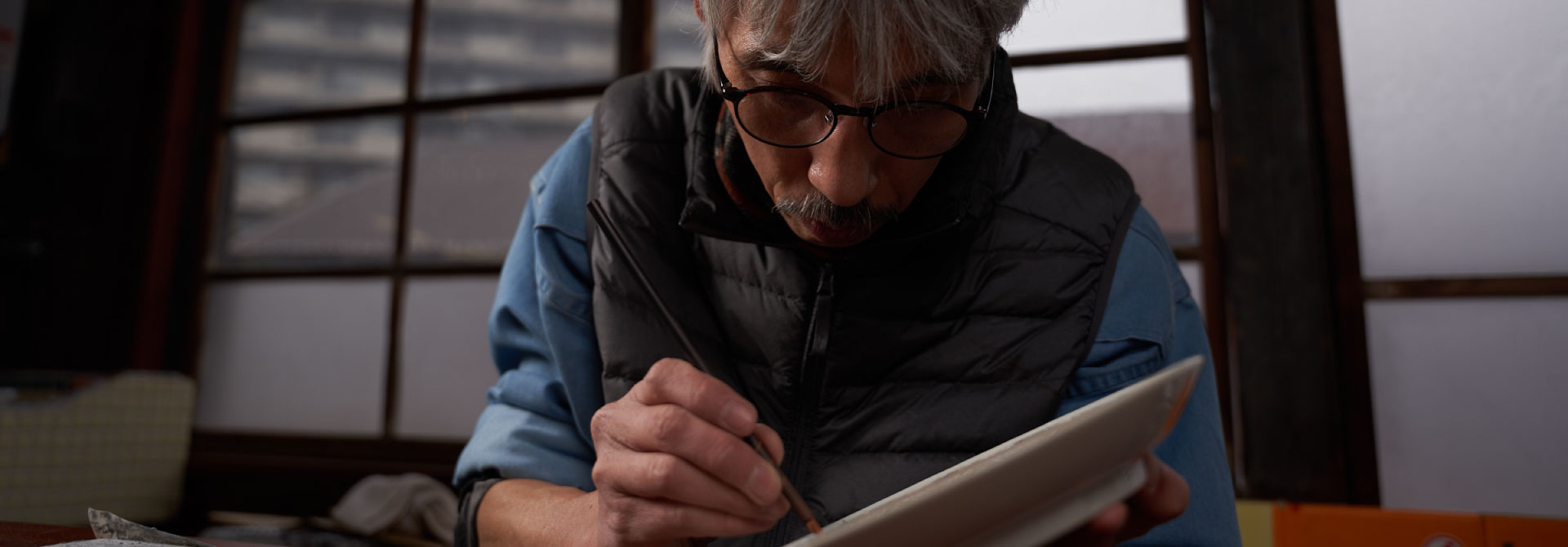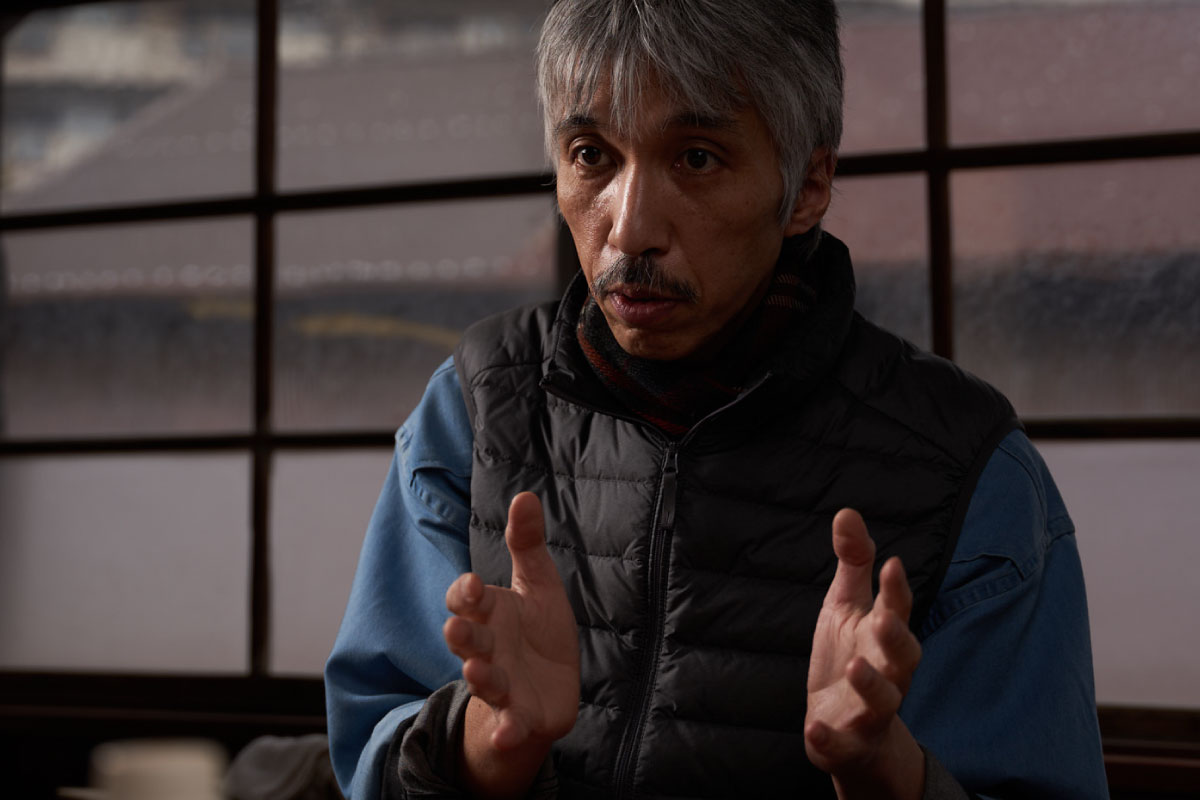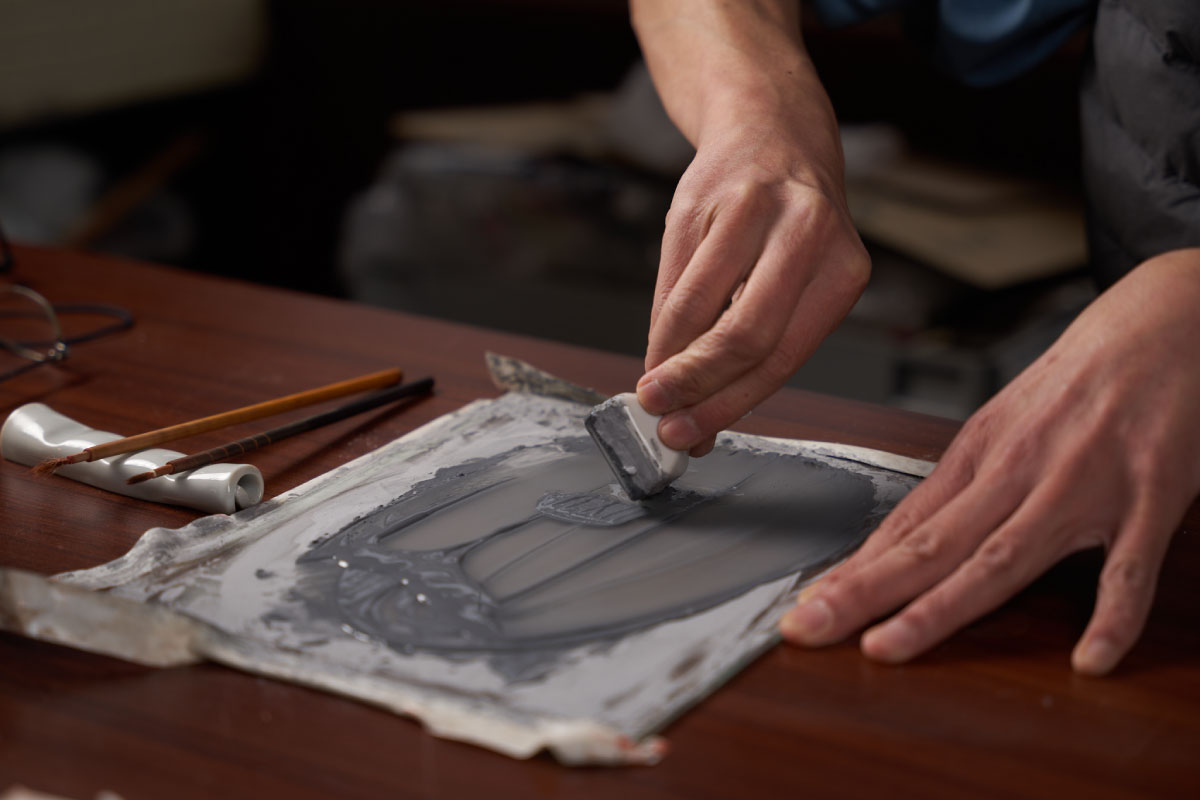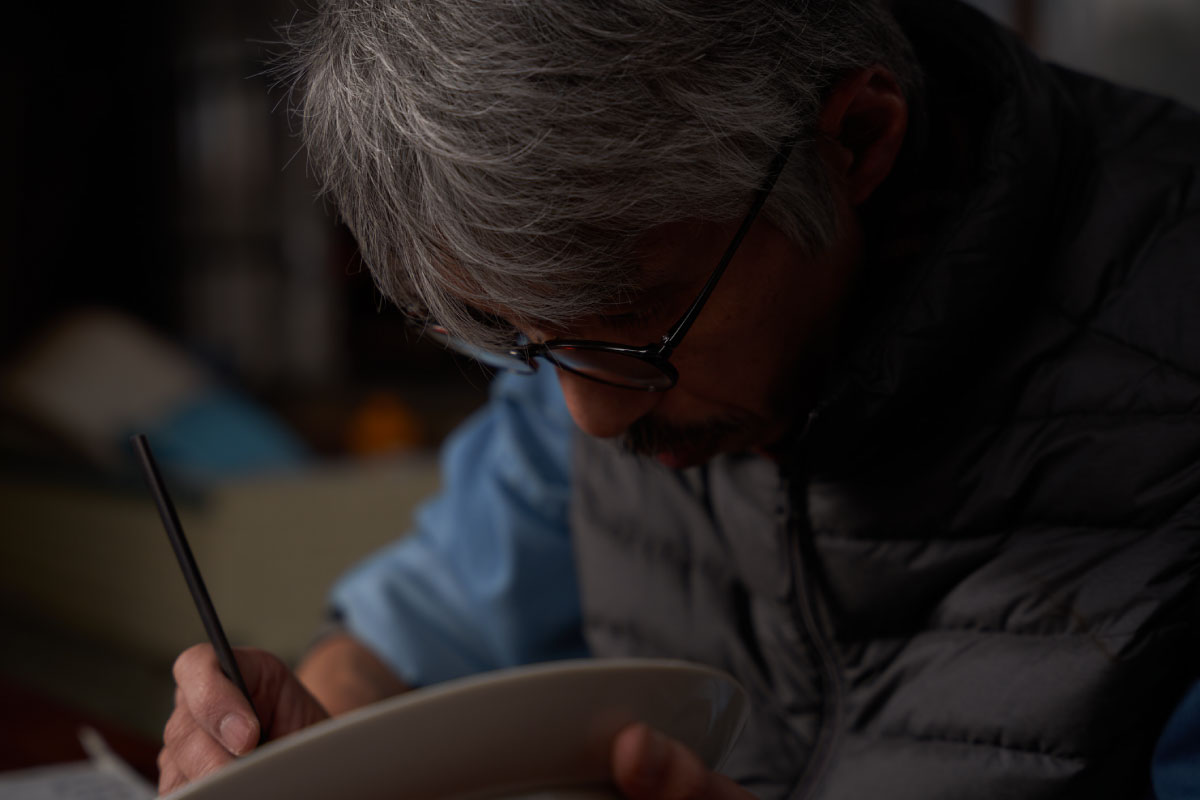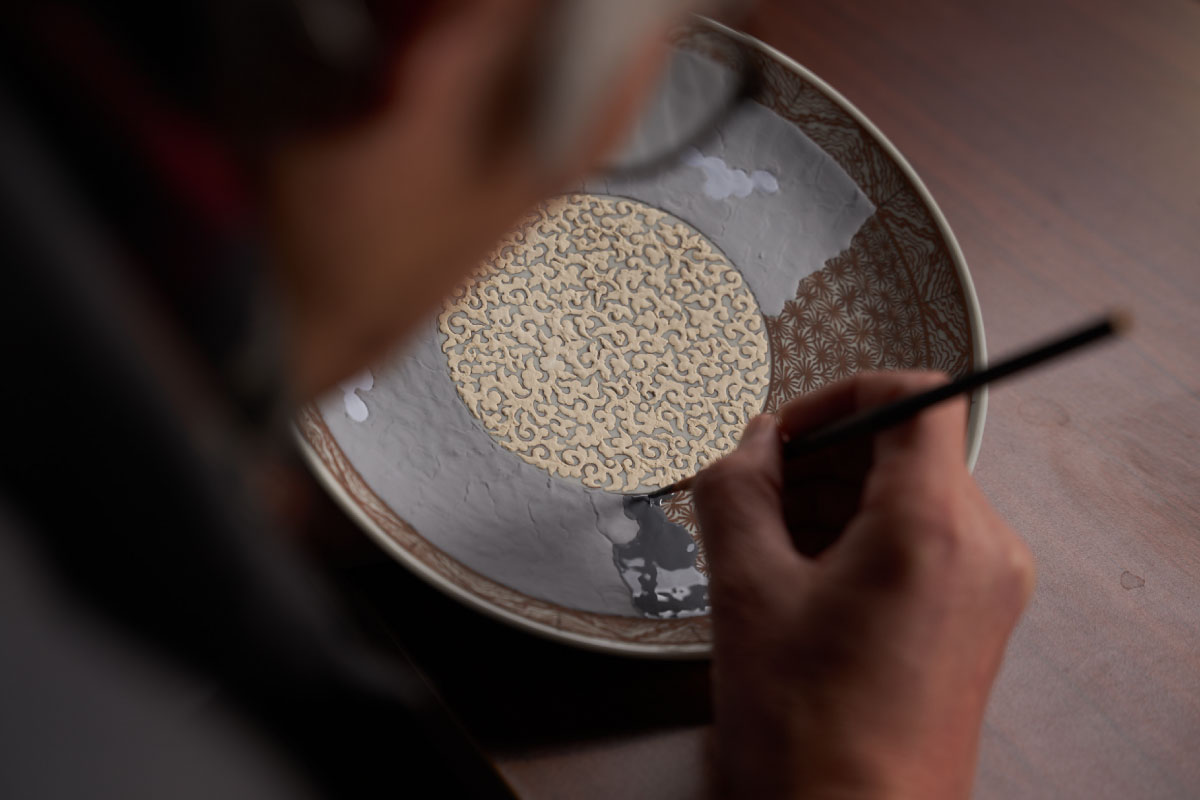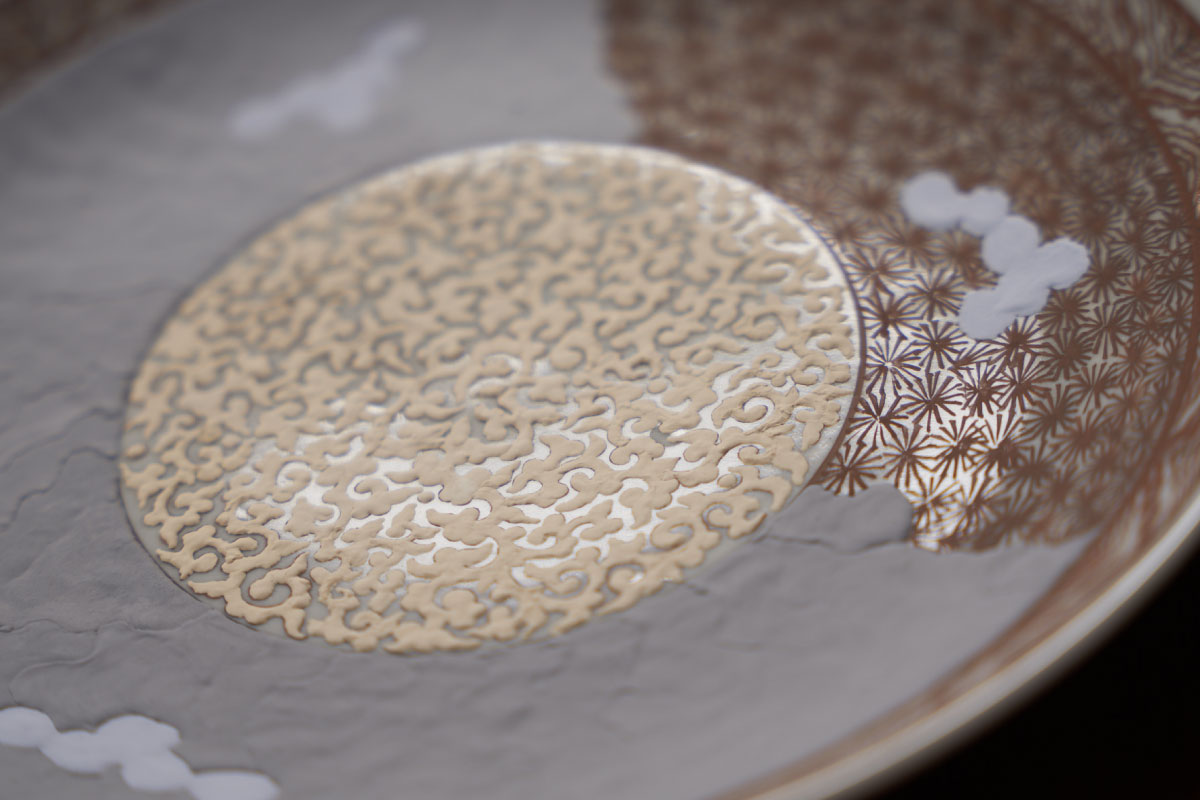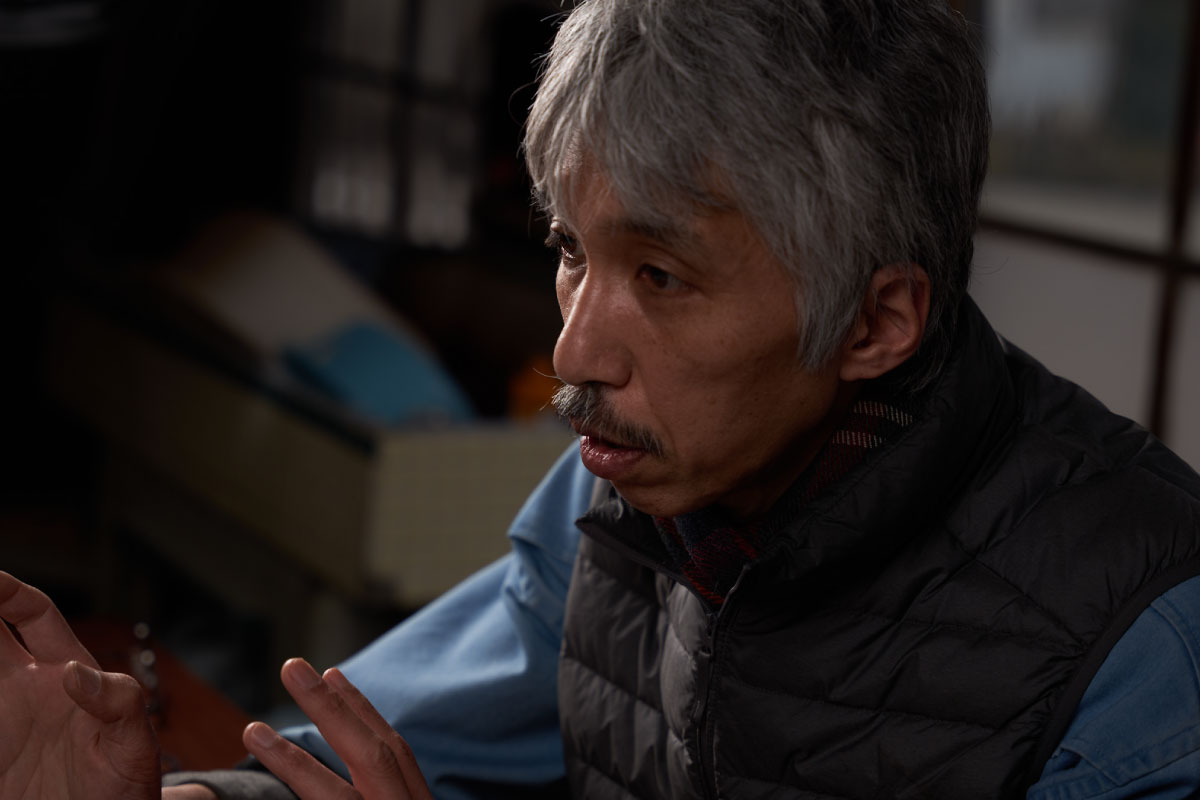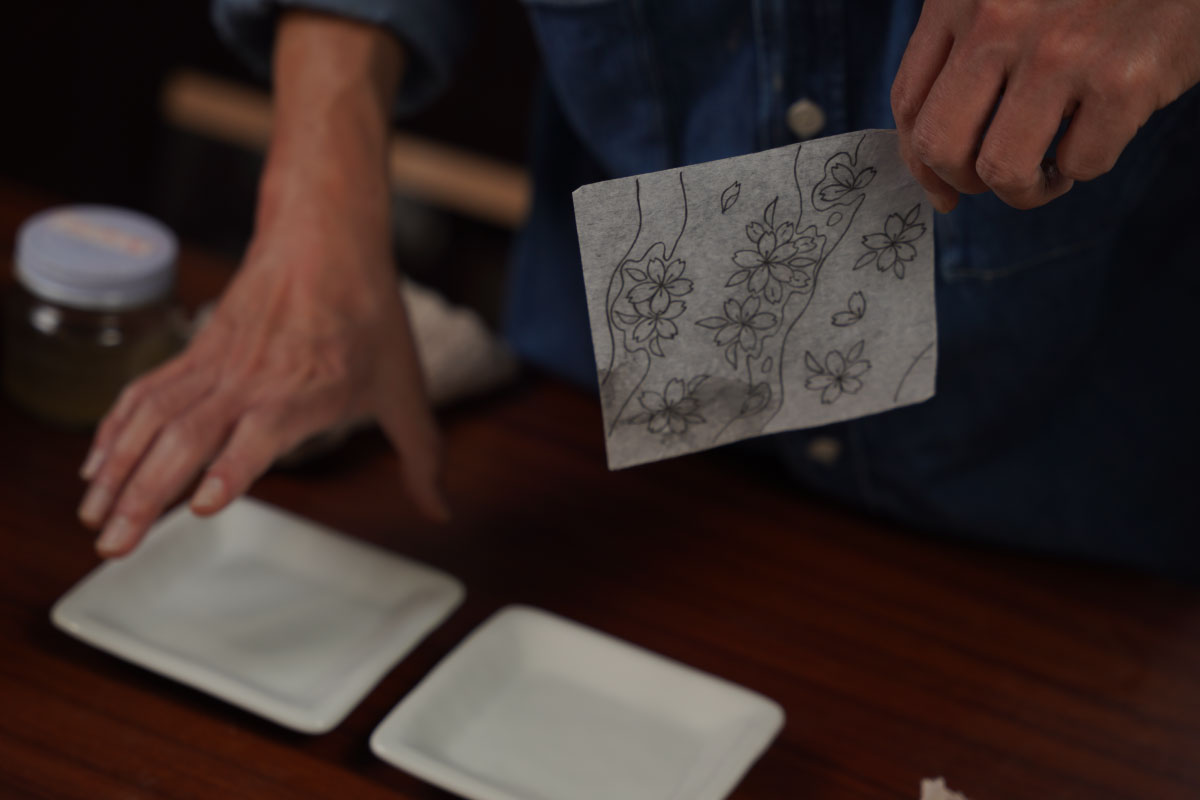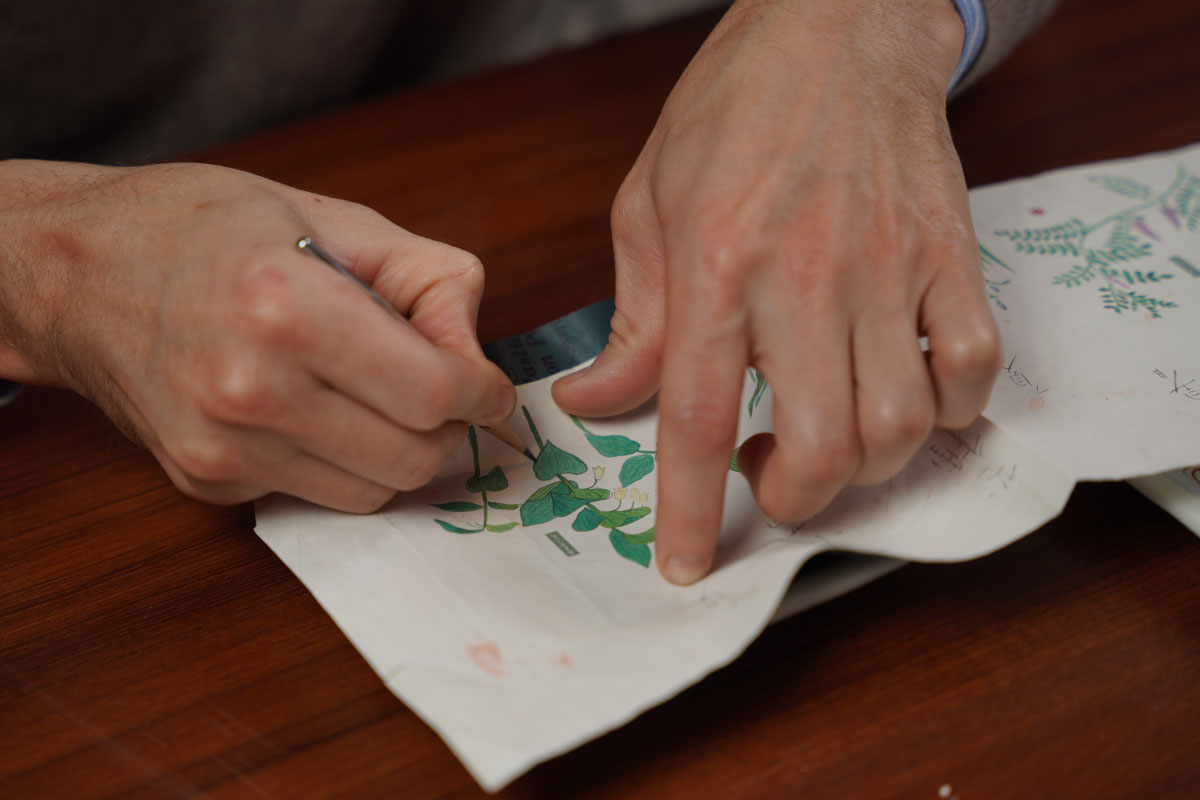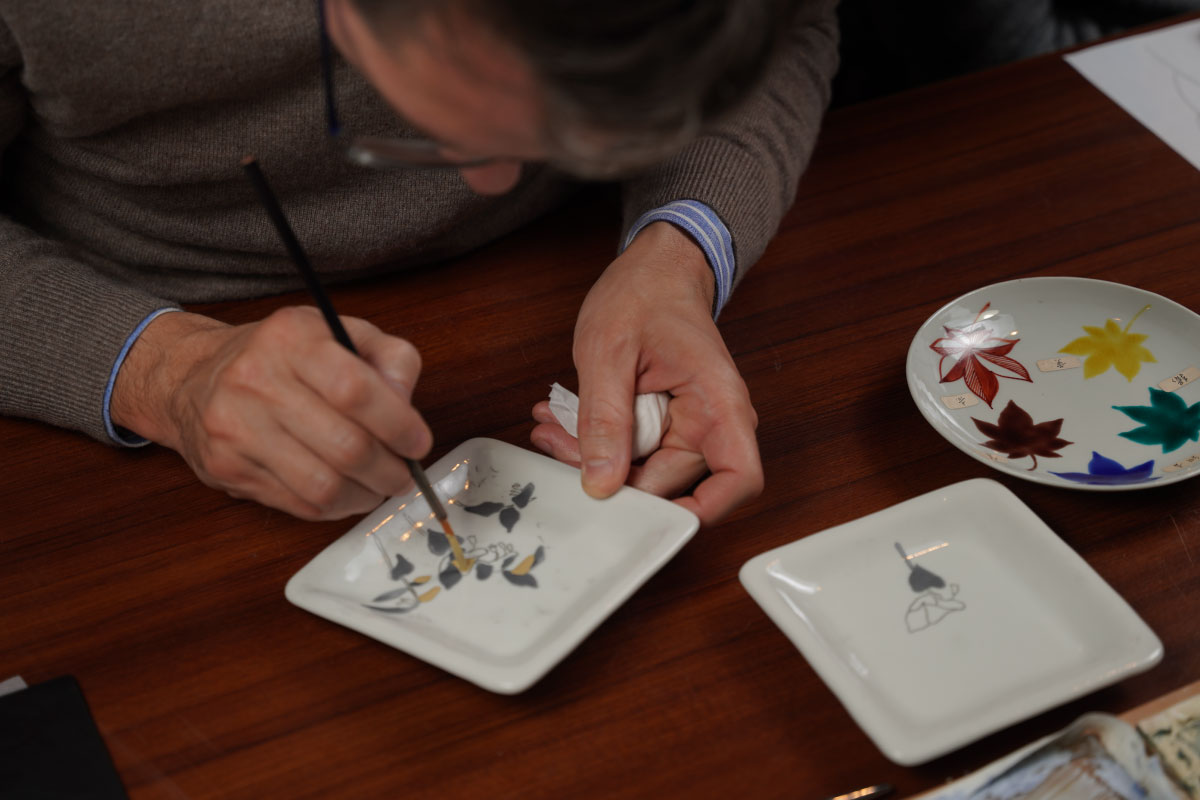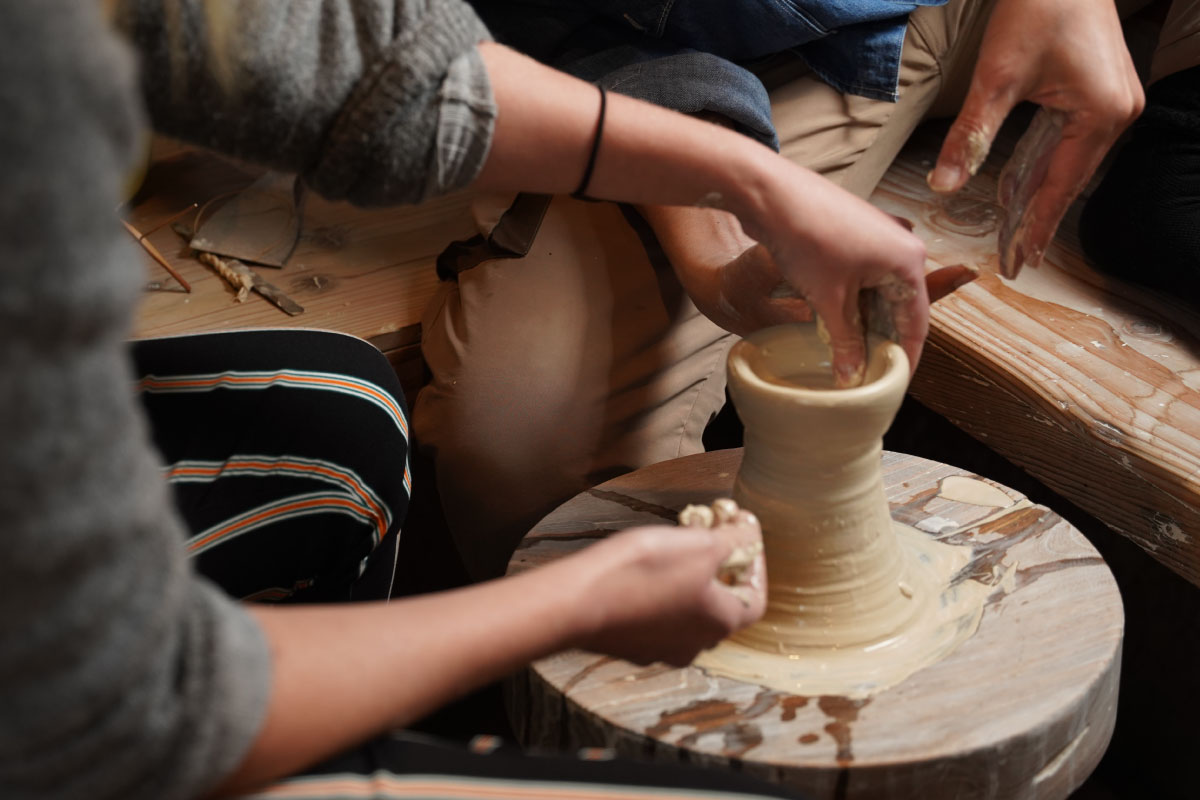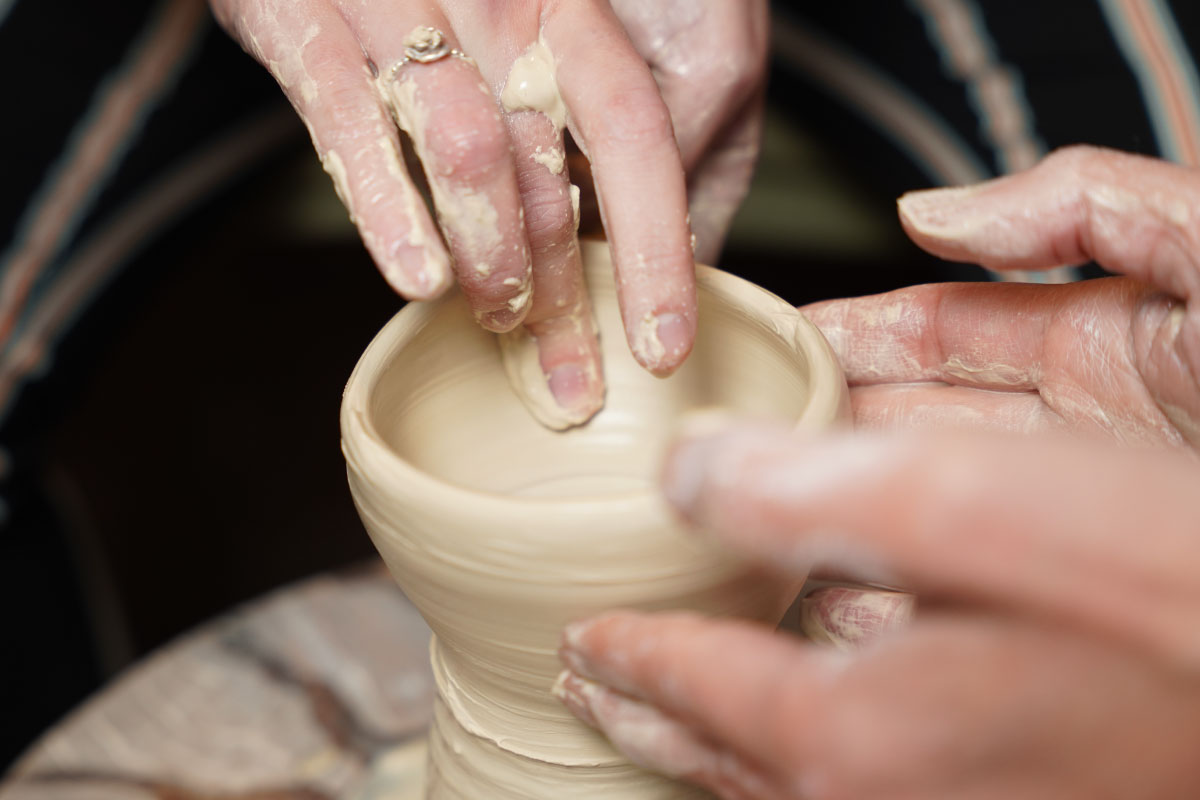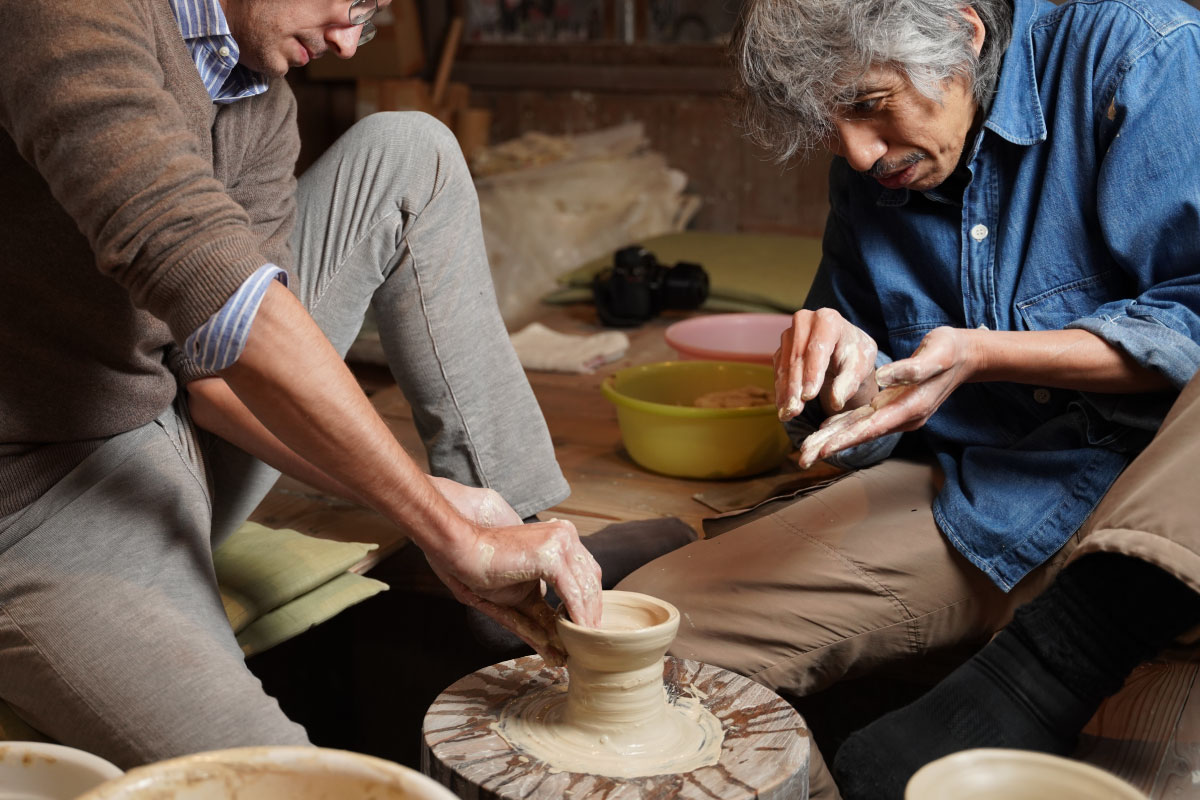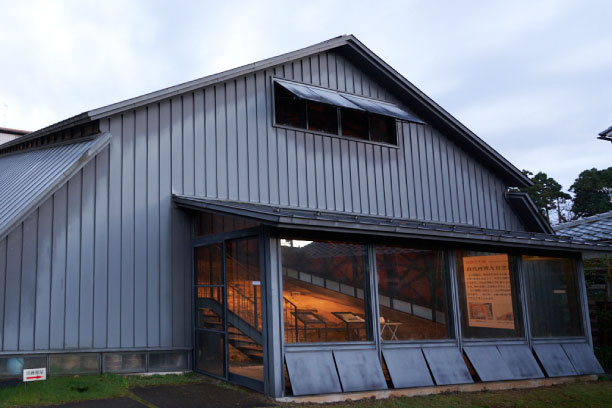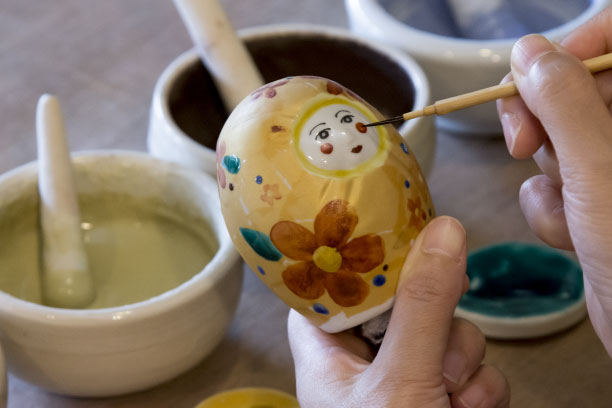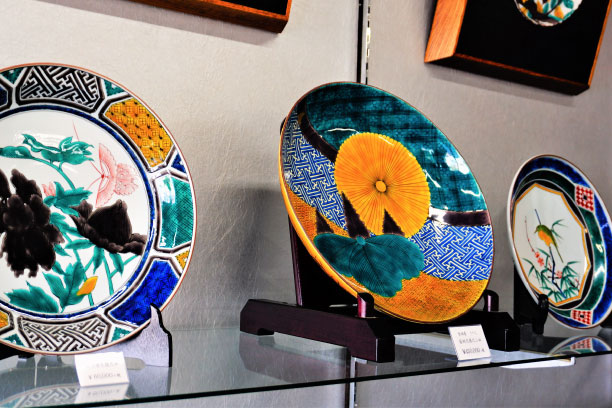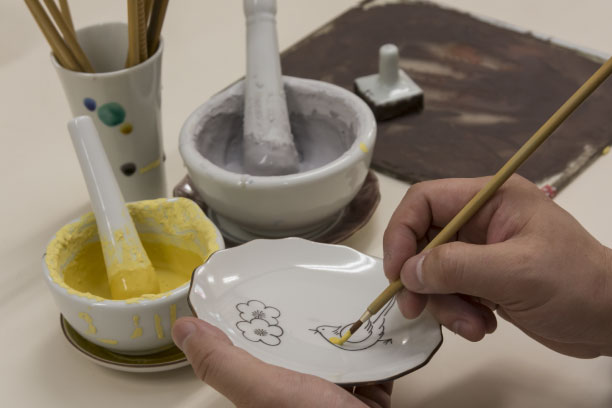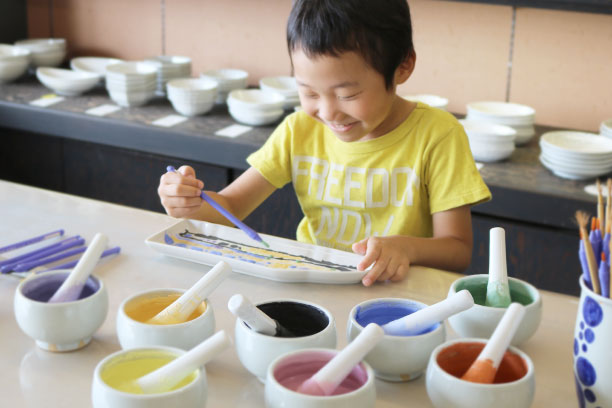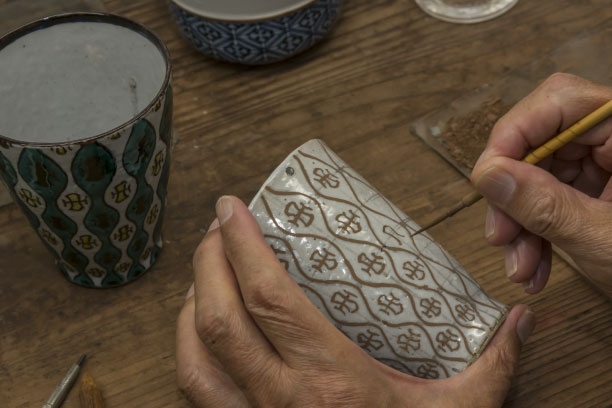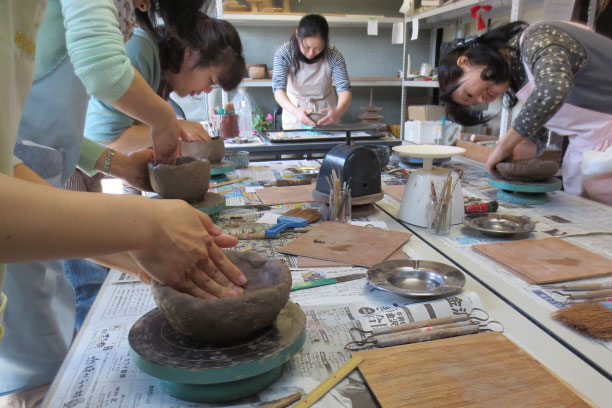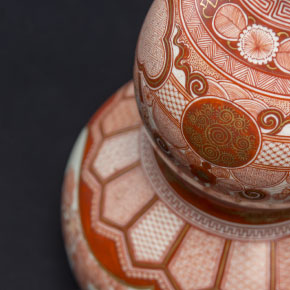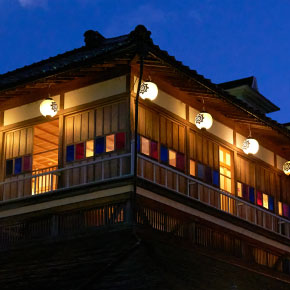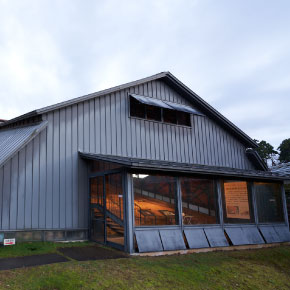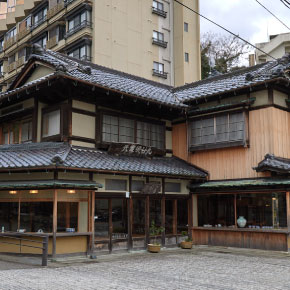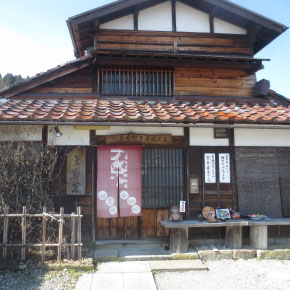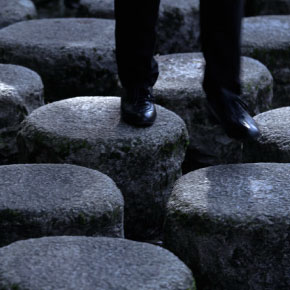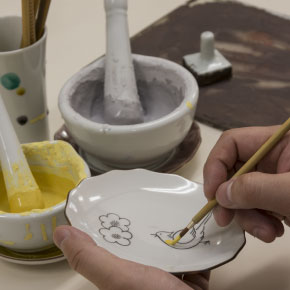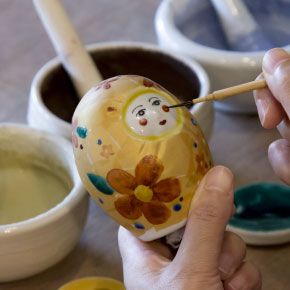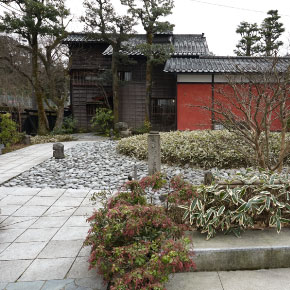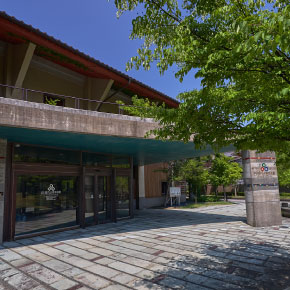The Secrets of Kutani-yaki
The Kutani-yaki Kiln Museum is a cultural facility built around ancient potter's kilns, Yoshidaya Climbing Kiln, and a workshop. The workshop is located in a 200-year-old craftsman's house that once served as a residence-cum-studio. Nowadays this building houses an atelier, an exhibition hall, and a shop where visitors can buy contemporary Kutani-yaki porcelain made by local artisans and artists.
Born in Kaga City, Mr. Shimada is an artist and the vice director of the Kutani-yaki Kiln Museum, who grew up in a family of Kutani-yaki makers. During his childhood, he thought he would become a Kutani-yaki maker himself, as his parents pushed him in this direction, but it was, in a way, not his own will. It was much later, when he entered at the Kanazawa College of Art, that his desire to become a Kutani-yaki artisan became obvious to him. It was during his studies that he came to understand that craftsmanship was much more than a simple combination of techniques, Kutani-yaki could be an artistic expression such as painting or sculpture. It was also at the College of Art that he had some pivotal encounters, in particular with KUZE Kenji (1945-2020) who became his master, and instilled in him the idea that one should always be curious and open to other arts. After graduating, he decided to leave and learn other ceramic techniques in another region for 5 years. Then he returned to his native region and started working in 1993.
The Work of a Lifetime
He defines his work as a craftsman-artist as the work of a lifetime or, in the words of his master, the pursuit of a quest. Craftsmanship is more than just work; it is a true quest for one's inner self. The line between craft and art is often blurred, and it is difficult to give a simple definition. Kutani-yaki's porcelain is not just a simple object. The form of the object is in itself artistic, but it is not just a piece to be displayed, it also has a function. This combination of function and form makes the piece unique and beautiful. As a functional object, it is intended to be used on a daily basis. This daily use will have an effect on the object, the piece will naturally polish, wear and give way to other unique characteristics. On the other hand, there are also pieces that are exceptionally beautiful, and one of the craftsman's jobs is to add a function to them. It is really the combination of these two aspects, aesthetics and functionality, which highlights the quality and strength of Japanese craftsmanship.
